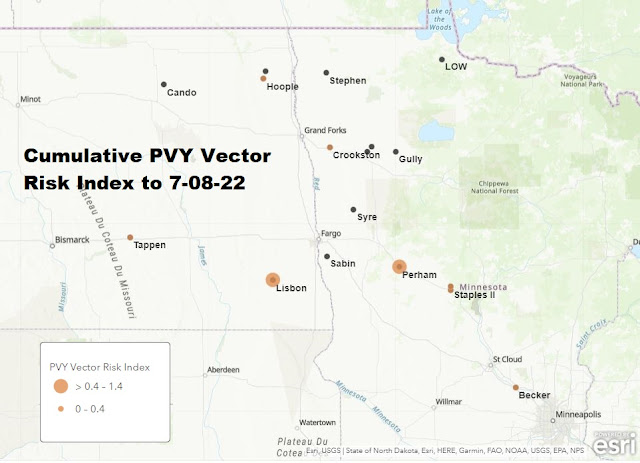Trap Catches to July 08, 2022.
Aphid vector captures increased this week with more traps reporting and numbers at active sites slightly increasing. We are still well behind last year with fewer aphids being recovered in traps than in 2021 (see the maps below for a comparison of this year and July 09 last year). This is understandable given last year's drought played havoc with the fungal diseases that control aphid populations. The spring rains and cooler temperatures this year hopefully allowed those fungi to rebuild and cause some mortality.
Cereal aphids remain low as do soybean aphids. Mostly we have recovered species that are associated with several other crop hosts; cotton melon and buckthorn aphids have been recovered in different locations. The late planting in all cropping systems has probably contributed to the low aphid counts so far. As always, as other crops start to mature, especially small grains, we can probably expect to see some more aphids finding their way into potato fields.
Keep scouting, we'll keep counting...




No comments:
Post a Comment